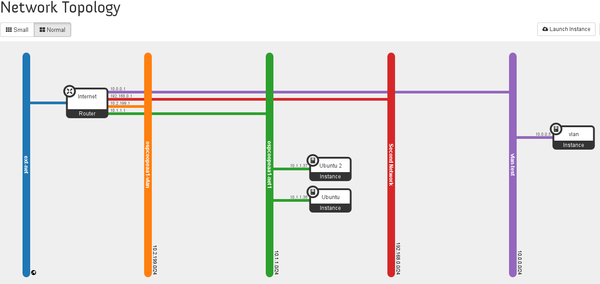Using the OpenStack Dashboard
Applies To: CLOUD IAAS
The dashboard provided by Memset is a slightly modified version of the Horizon dashboard provided by OpenStack.
The first thing you will need to do is to log into the dashboard to manage your deployment. The login URL, username and password will be sent to your Memset administrator account email address after the OpenStack service has been ordered and setup.
The dashboard interface is split into two main sections; Project and Identity. You do not need to worry about the Identity section as it enables management of additional deployments. For the time being, if you obtain any additional Memset OpenStack deployments they will receive their own dedicated dashboard and will therefore not appear here.
The Project section contains three subsections from which the infrastructure is managed. These are;
- Compute
- Network
- Orchestration
Compute
The Compute section is where the instances, volumes, images and snapshots are managed. The Compute section is divided into five subsections:
- Overview - shows a list of all the created instances as well as the current use of the resources that are available in the deployment.
- Instances - where instances are created and managed.
- Volumes - where volumes are created and managed.
- Images - where images are created and managed.
- Access & Security - where the firewall, SSH keys, IP's and API are managed.
Network
All of the networking for the OpenStack is managed within this section. It contains three subsections where the individual parts of the OpenStack network can be created and configured. They are:
- Network Topology - This section presents a graphical overview of the OpenStack network and all of the routers and instances that are live. Here is an example overview:

The network resources shown in the overview cannot be directly configured from this page, but hovering over them will show their current status for example if they are running or not, their IP addresses and other information, and will also allow some limited control such as the starting up or shutting down of an instance.
- Networks - This is where new networks and subnets are created and managed.
- Routers - This is where new virtual routers are created and configured.
Orchestration
This is where OpenStack processes can be automated. Almost every procedure in OpenStack can be automated by creating a HEAT template, which is simply a text file containing YAML code, which is run from the dashboard.
Please see the automation guide for details information on OpenStack automation.
The orchestration section contains two subsections:
- Stacks - This is where your custom HEAT scripts are managed.
- Resource Types - This page contains a list of examples of HEAT templates that perform a specific task.